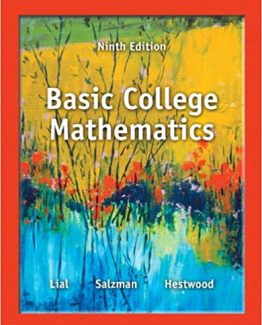Algebra: Volume One by B.L. van der Waerden, ISBN-13: 978-0387406244
[PDF eBook eTextbook]
- Publisher: Springer (October 21, 2003)
- Language: English
- 279 pages
- ISBN-10: 0387406247
- ISBN-13: 978-0387406244
This beautiful and eloquent text transformed the graduate teaching of algebra in Europe and the United States. It clearly and succinctly formulated the conceptual and structural insights which Noether had expressed so forcefully and combined it with the elegance and understanding with which Artin had lectured. This text is a reprinted version of the original English translation of the first volume of B.L. van der Waerden’s Algebra.
Isomorphically, this book is the “Bible” for Abstract Algebra, being the first textbook in the world (@1930) on axiomatic algebra, originated from the theory’s “inventors” E. Artin and E. Noether’s lectures, and compiled by their grand-master student Van der Waerden.
It was quite a long journey for me to find this book. I first ordered from Amazon.com’s used book “Moderne Algebra”, but realised it was in German upon receipt. Then I asked a friend from Beijing to search and he took 3 months to get the English Translation for me (Volume 1 and 2, 7th Edition @1966).
Agree this is not the first entry-level book for students with no prior knowledge. Although the book is very thin (I like holding a book curled in my palm while reading), most of the original definitions and confusions not explained in many other algebra textbooks are clarified here by the grand master.
For examples:
1. Why Normal Subgroup (he called Normal divisor) is also named Invariant Subgroup or Self-conjugate subgroup.
2. Ideal: Principal, Maximal, Prime.
and who still says Abstract Algebra is ‘abstract’ after reading his analogies below on Automorphism and Symmetric Group:
3. Automorphism of a set is an expression of its SYMMETRY, using geometry figures undergoing transformation (rotation, reflextion), a mapping upon itself, with certain properties (distance, angles) preserved.
4. Why called Sn the ‘Symmetric’ Group ? because the functions of x1, x2,…,xn, which remain invariant under all permutations of the group, are the ‘Symmetric Functions’.
etc…
The ‘jewel’ insights were found in a single sentence or notes. But they gave me an ‘AH-HA’ pleasure because they clarified all my past 30 years of confusion. The joy of discovering these ‘truths’ is very overwhelming, for someone who had been confused by other “derivative” books.
As Abel advised: “Read directly from the Masters”. This is THE BOOK!
What makes us different?
• Instant Download
• Always Competitive Pricing
• 100% Privacy
• FREE Sample Available
• 24-7 LIVE Customer Support






Reviews
There are no reviews yet.